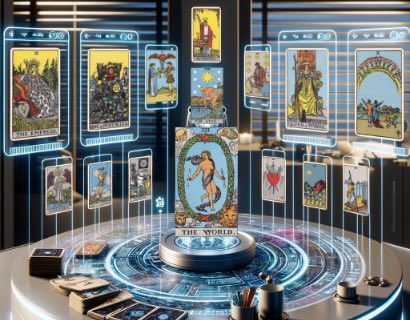Death Tarot Card Meaning & Interpretations
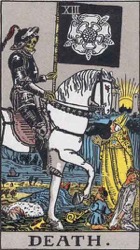
There are two distinct types of change or endings, one is cyclic and the other non-cyclic or un-expected. Cyclic changes are the seasons of the year, phases of the moon etc. In numerology, and consequently in Tarot's symbolism, the cycle of the cards in the minor arcana go from 1 -> 9 -> 10 (1+0 = 1) in an infinite loop. Cards numbered 9 in Tarot signify a predictable end to a cycle which heralds the beginning of a new one in the following 10. Death is an unpredictable, sudden or unexpected ending because it does not follow, or perpetuate, a cycle nor does it herald a new beginning but instead symbolises complete closure.
Nothing is ever completely destroyed though, instead it is transformed. Within a repetitive, endless, cycle there is little scope for major change. To perpetuate a cycle it needs to retain its form largely unchanged. Therefore Death can be viewed in a positive light as the breaker of mundane, stagnant, cycles allowing full transformation to a new form which can settle into an evolved, better, cycle. Projects may fail, relationships end, loved ones die but they leave us transformed by the wisdom we gained in experiencing them if we allow ourselves to move on and begin again new.
Tarot's Death card is one of the cards that beginners find intimidating, perhaps even frightening, to find in their spreads. Tarot can be literal, and on a rare occasion this maybe the message, but it is good practice when reading tarot spreads not to jump to literal conclusions each time these cards appear.
Numerology: Death has the number 13 in the Major Arcana. A number considered unlucky in Western cultures this number, in numerology, reduces to the number 4 (1+3) which is considered very unlucky in East Asian cultures. The word for 4 and the word for death sound very similar in Japan, Korea, Taiwan and parts of China. The fear of the number 4 is known as Tetraphobia. It is traditional in Marseilles Tarot decks for this card to be the only card to have no name, just a number. Tarot's Death card is linked to all cards numbered 4 through this shared numerological symbology. This includes the pip cards numbered 4 in the Minor Arcana and The Emperor in the Major Arcana which, due to their relationship, also includes all the Kings in the Minor Arcana.
© Phuture Me Ltd 2010-2018. All rights reserved.
THE PICTORIAL KEY TO THE TAROT
By Arthur Edward Waite (1911)
The veil or mask of life is perpetuated in change, transformation and passage from lower to higher, and this is more fitly represented in the rectified Tarot by one of the apocalyptic visions than by the crude notion of the reaping skeleton. Behind it lies the whole world of ascent in the spirit. The mysterious horseman moves slowly, bearing a black banner emblazoned with the Mystic Rose, which signifies life. Between two pillars on the verge of the horizon there shines the sun of immortality. The horseman carries no visible weapon, but king and child and maiden fall before him, while a prelate with clasped hands awaits his end.
There should be no need to point out that the suggestion of death which I have made in connection with the previous card is, of course, to be understood mystically, but this is not the case in the present instance. The natural transit of man to the next stage of his being either is or may be one form of his progress, but the exotic and almost unknown entrance, while still in this life, into the state of mystical death is a change in the form of consciousness and the passage into a state to which ordinary death is neither the path nor gate. The existing occult explanations of the 13th card are, on the whole, better than usual, rebirth, creation, destination, renewal, and the rest.
Related Tarot Cards
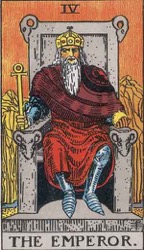 |
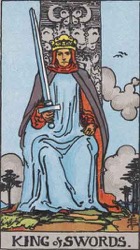 |
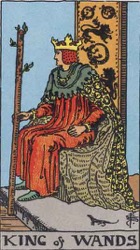 |
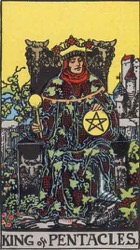 |
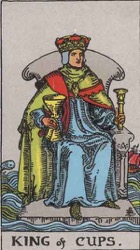 |
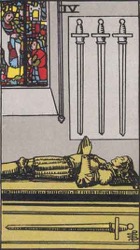 |
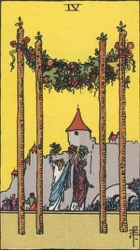 |
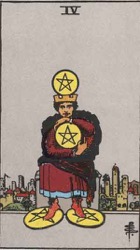 |
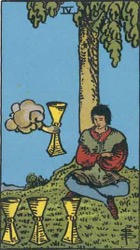 |
© Phuture Me Ltd 2018. All rights reserved.
